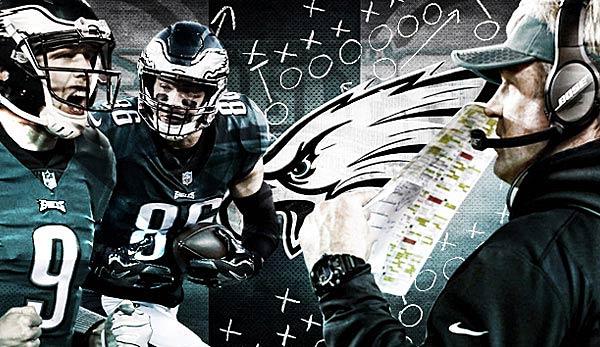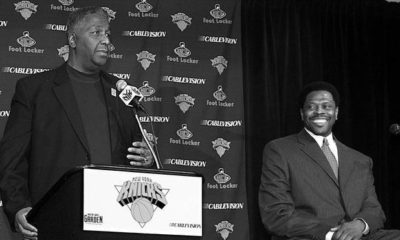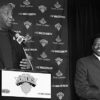US-Sport
NFL: Tactics Analysis: What makes the Eagles Offense so powerful?
The Philadelphia Eagles had the most spectacular offense of the season – until quarterback Carson Wentz injured himself. It took a few weeks, but eventually Philly managed to take the vikings apart in the Championship Game. Nick Foles benefits from lots of support and a great passing-scheme, SPOX shows how the Eagles-Offense works. Super Bowl LII will be available on 4. February from 11.45 pm live on DAZN – optionally with German and original US commentary!
Whenever an offense puts the best defense of the league in the clearest terms, this performance deserves respect. This trick without the starting quarterback and in the playoffs to accomplish is yet another caliber.
The performance of the Eagles against Minnesota symbolizes the quality of this Eagles-Offense: Philadelphia benefits from a very good offensive line on the one hand, but also has a great offensive scheme on the other hand, which makes life extremely easier for the quarterback.
This does not mean that Carson Wentz would not have played a good season – on the contrary. His ability to expand the plays in the pocket or at least within the rough structure of the original move was worthy of Eagles Gold and an elementary factor in the outstanding third down numbers. But the playful situation he slipped into due to Wentz’ injury was very pleasant for Nick Foles.
Head coach Doug Pederson has formed an opener that strongly reminds us of what we saw in Kansas City this year – little surprisingly Pederson’s former mentor Andy Reid is responsible for – and also reminds us of ex-Eagles coach Chip Kelly. On the other hand, however, he has made them even more efficient and aggressive. Despite the quarterback situation in Philly, this will be a real test for the patriots in the Super Bowl – SPOX shows what it’s all about.
Early in the season it was the big topic: The Run Pass option. On the one hand, because the Chiefs had impressively won the opening game at the Patriots with several unexpected, more college-known offensive stylistic devices – including the Run Pass Options. On the other hand, however, it was also because numerous teams quickly revealed huge problems in their offensive lines and the RPOs provided comparatively quick help.
The Houston Texans, after the quarterback switch to Deshaun Watson, put their money on Play Action and Run Pass Option, the Chiefs stayed with them all season long – and the Eagles also took down defenses by RPOs. 181 RPOs played Philly in the regular season, well above the 63rd division average. The offense and especially Foles now benefit enormously from this.
The Run Pass option allows the quarterback to choose between two or even three options within fractions of a second after the snap. Most of the time he reads a pre-determined defender – usually a linebacker or safety – and depending on what he does, he can either pass the ball to his running back (if the defender remains in coverage) or match it to a receiver (if the defender attacks the line of scrimmage to stop a run).
Similar to Zone Read, this compensates for the numerical disadvantage of the offense: With a normal pass, the quarterback “only” functions as a ball distributor – the rest of the offense plays ten against eleven. In Zone Read, when the quarterback potentially starts running with the ball itself, just like a Run Pass option, the defense has to defend differently. The RPOs are in a way the evolution of the Play Action Game. Instead of just faking the run from the start and going straight into the pass, the Run Pass option offers a real chance to run and pass.
But the RPOs of the offense do much more than that: they simplify the work for the quarterback, which usually only needs to have one side of the field and not infrequently only one or two defenders directly in view during a run-pass option play. The read is clearly defined before the snap, which helps a less experienced or simply less talented quarterback tremendously.
As early as 2016, Pro Football Focus had an average of just over five run pass options per game, with the Bengals leading the league with a proud 6.2 yards per RPO. And Philadelphia had already made its own experiences with it before 2016 – ex-coach Chip Kelly of all people, whose dismissal in 2015 led to a radical general overhaul of the Eagles squad, had brought the RPOs from college.
“I think he led them to the NFL stage, not only in terms of our team, but in terms of the whole league,”confirmed Tight End Zach Ertz,”but they’re definitely evolved today,” Ertz alludes to the diversity of the Eagles at the RPOs, and that’s quickly apparent on the tape – Philly is extremely good with Pederson’s Run Pass Options for the NFL.
This means, among other things, that the RPOs include several built-in pass options for folders. This is often a screen for one thing and a slant-route over the middle to the other side, here there are always open receivers. This pulls the defense apart and forces defenders into the decision dilemma that the offense wanted.
A possible outside-run has built in a screen from the same formation to the other side, a pre-snap motion is combined with play action, and so on. Plays and formations are interconnected throughout the game. As a result, the Defense for the quarterback becomes clearer in the course of the game – and the Defense can only constantly read which play comes after the snap. A clear difference to the one-dimensional offense under Chip Kelly.
The same goes for the Eagles’ Run Game. Philadelphia has a shiny blend of both the strengths of blocking and the qualities of its own running backs.
The former – namely LeGarrette Blount and Jay Ajayi – shine in their ability to reach yards after their first contact with their opponents. In the postseason, Ajayi leads all running backs with at least 18 runs on the account in yards after the first contact (3,27). Both backs were in this category in the regular season in the top 10, Blount (3.56 yards per run after contact) even led the league here.
The other aspect, the qualities and focus in blocking, complement these qualities. While Philly is not necessarily one of the most dominant run-blocking teams on the Line of Scrimmage – where Blount and Ajayi take out many yards themselves – blocking on the second level (i. e. the linebackers, some yards behind the line of scrimmage) is excellent. In this area the Eagles belong to the top league.
This is where the elementary role of Jason Kelce comes in. Philadelphia’s Center isn’t exactly the most powerful center, let alone offensive Lineman in the NFL, but technically it’s one of the absolute elite. A pillar in the run-block of the Eagles is to get Kelce behind the Line of Scrimmage as fast as possible.
This can lead to problems for Philly if an opponent manages to keep Kelce constantly busy – for example by playing a bear front against the Eagles. The trademark feature of the Bear front is that each of the three Interior Offensive Linemen (the two guards and the center) gets a direct opponent, a mixture of defensive tackles and defensive ends lining the middle of the line. New England’s Defensive Line is well positioned to do just that.
The Eagles will have to widen the defence – a good Outside Run Game as well as the combination with Play Action and Run Pass Options will help. On the other hand, there are also answers to this question in blocking: If the center is delivered, Philadelphia does a very good job of getting another blocker to linebacker level. Especially the tight ends are obligatory, the eagles use them efficiently as pull-blockers, on the backside of the lay (i. e. if the run goes to the right the left side of the offense) and also as second-level-blockers.
Page 1: Run Pass Options and the Run Game of the Eagles
Page 2: Philadelphias Passing Game: Great Flexibility Made Easy


















You must be logged in to post a comment Login